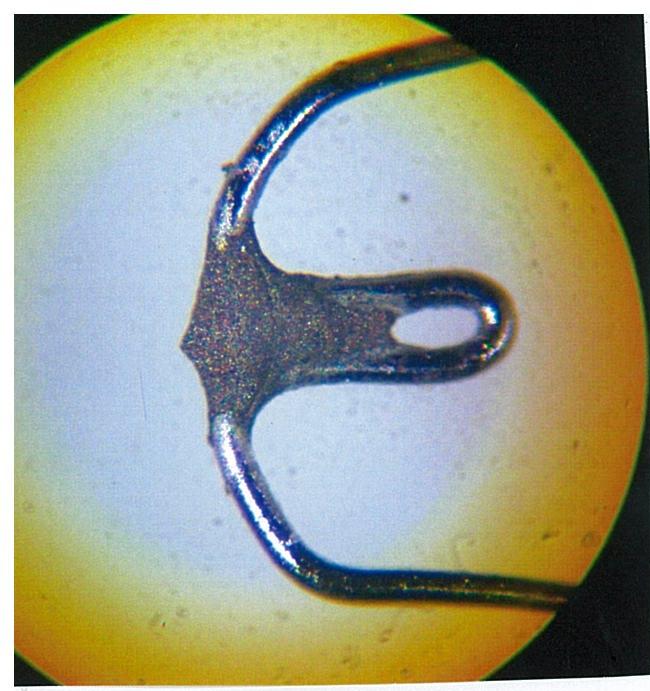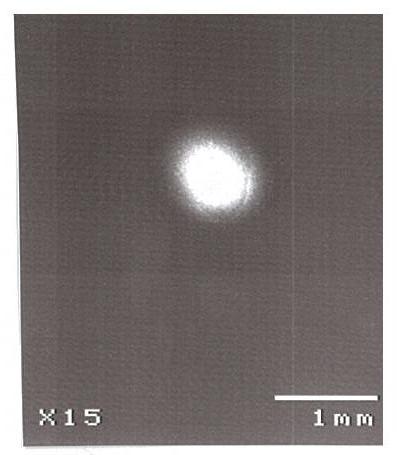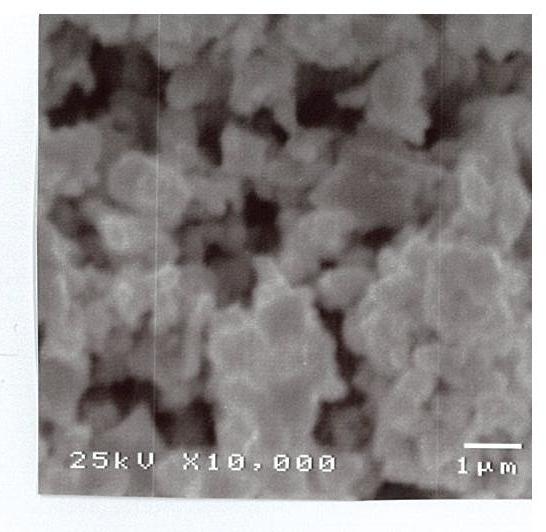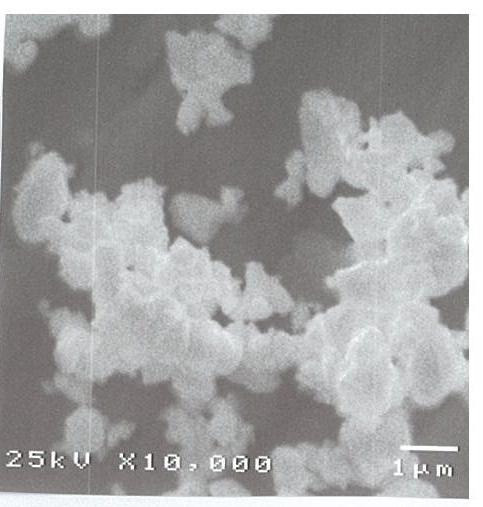IT-1-P-2410 Thermal Emission Properties of GdB6 Cathode
Introduction: Hexa boride of lanthanum (LaB6) has been widely used in electron beam
instruments because of its higher brightness than that of tungsten hairpin cathode. But it might
be that there are better materials than LaB6. Among many borides of lanthanide, hexa-borides
of Ce and Gd are promising from the existing data[1] based on Richardson-Dushman equation as
shown in Table 1. So we tested electron emission properties of GdB6.
Table 1
A φ(eV) AT2 I(A/cm2)
LaB6 29 2.66 93960000 3.316363
GdB6 0.84 2.06 2721600 4.607963
GdB6 9.3 2.55 30132000 2.16234
GdB6 10 2.58 32400000 1.915988
R-D Eq. I=AT2EXP(-φ/kT), A:R-D constant, k:Boltsman cont, T:temperature(1800k), I:electron
density
Results: Fig.1 shows photograph of Ta wire covered with GdB6 powder where the central part is
slightly protruded. Fig.2 is beam pattern of GdB6 cathode at working temperature when the
cathode is installed in a scanning electron microscope. Fig.3(a) shows SEM image of ZnO
particles obtained with tungsten hairpin cathode and Fig.3(b) shows that obtained with GdB6
cathode. It is seen that image quality of (b) is superior to that of (a). It is also clear that emission
performance of present GdB6 powder cathode is nearly equal or little better than that of LaB6
single crystal. Sintered GdB6 cathode is now under examination to compare with the single
crystal LaB6 cathode.
Reference:[1]Japan-Soviet Communication “Emission Characteristics of Materials” pp.96-81 by
V.S.Fomenko, Published by Naukova Dunka, Kiev 1970

Fig. 1: Fig.1 |

Fig. 2: Fig.2 |

Fig. 3: Fig.3(a) |

Fig. 4: Fig.3(b) |